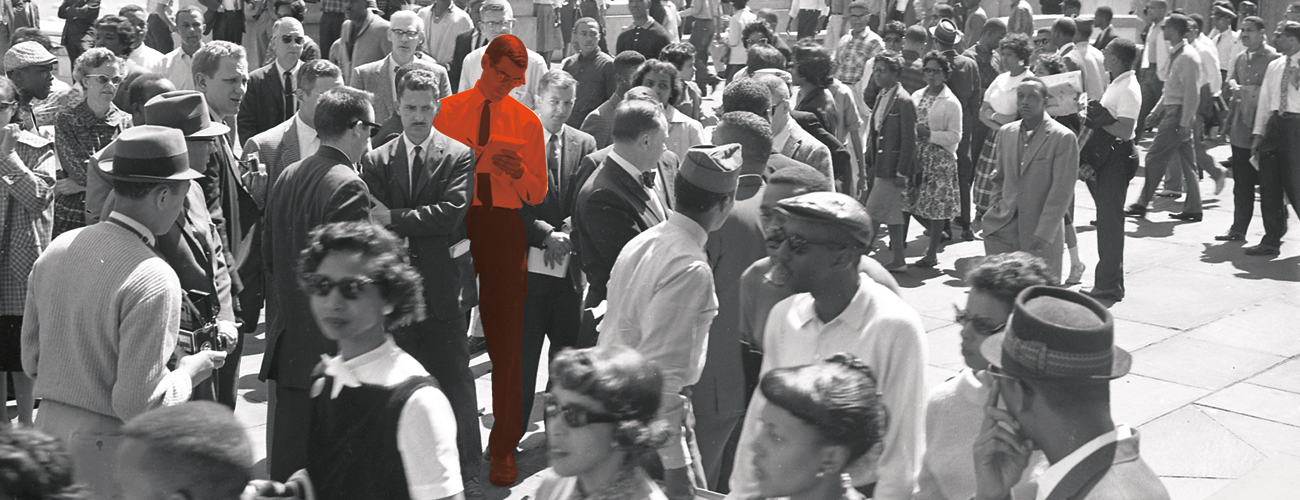A month after David Halberstam graduated from Harvard University in 1955, he took a job as the lone reporter on Mississippi’s smallest daily newspaper, the West Point Daily Times Leader, circulation 4,000. Immediately after setting foot in the newsroom, he encountered Beulah Harris, the mother of the editor of the family-owned paper. She looked the 6-foot-3-inch, 21-year-old New Yorker up and down and smiled: “The Lord Jesus Christ sent you here.”
“I, descendant of many centuries of illustrious rabbis, a line only recently broken by two or three generations of American renegades, looked at her in stunned surprise,” Halberstam wrote in Esquire in 1981. “ ‘Of course He did,’ she said. ‘Why else would you be here?’ I could not argue, and with that we became friends.”
For Halberstam, that began a journey through the South and local newspapers that lasted until James Reston, then the Washington bureau chief of The New York Times, noticed his work and hired him in 1960.
Halberstam, who died in a car accident in 2007 on his way to an interview in Menlo Park, California, will mostly be remembered for his landmark coverage of the Vietnam War, which won him the 1964 Pulitzer Prize at the age of 30, and his 21 books, including The Best and the Brightest and The Powers That Be. And then there’s the sheer breadth of his coverage, from Civil Rights to the rivalry between his beloved New York Yankees and the Boston Red Sox, Manhattan firefighters ravaged by 9/11, and rowers dreaming of Olympic glory.
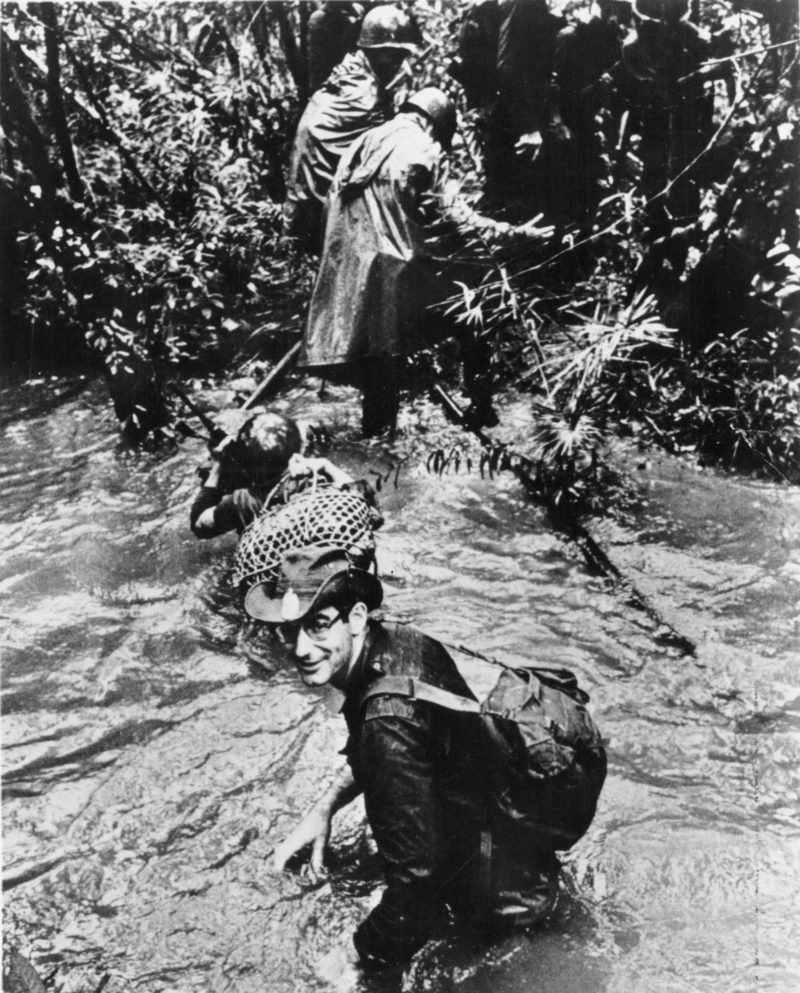
Halberstam in Vietnam in an undated photo. (Photo by Horst Faas / Associated Press)
But his stint as a local reporter served him well, and throughout his life he acknowledged the importance of that experience with a mix of affection and frustration. “I learned to listen—not to go through the motions of listening but to really listen,” he said in a commencement speech at the University of Mississippi in 2005. “I learned to respect people I often disagreed with in the most profound way.”
Halberstam presumably had plenty of options as he approached the end of his college years and pondered what to do next. He was managing editor of The Crimson, Harvard’s campus newspaper, and for many people with his pedigree, it would have been easy to hop aboard the Ivy League express to a big-newspaper job in the Northeast, where he would have been right at home.
There was no question that journalism was his calling. “I wasn’t good at anything else because I really had what we now call ADD. I can see myself in the sixth grade. If I had a teacher I didn’t like or a subject that was not being well-taught, I can see myself flying out the window in boredom,” he said in a 2005 interview with YES, the New York cable television network that carries Yankee games. “And in college, I was a poor student, bottom third of my class. I was good at one thing: the college daily paper.”
In what became a lifelong pattern, Halberstam’s curiosity drove him to where the action was, and he had a keen sense of where the next big story was going to happen. A year before he graduated from Harvard, the US Supreme Court ruled, in Brown v. Board of Education, that separate public schools for whites and blacks were unconstitutional. Halberstam wanted to cover the story that would soon dominate the nation’s domestic agenda: the Civil Rights Movement. As former New York Times reporter Clyde Haberman put it, Halberstam possessed a gift for finding “nascent” stories. “In Civil Rights and the [Vietnam] War, he caught two of the biggest stories of our lifetime,” says Haberman.
It is the fear of being alone on a story, of arriving once again in a new town or a new country, of knowing no one, of making calls and having no one return them.”
Two weeks after Halberstam graduated from Harvard, he loaded up a ’46 Chevy with his clothes, record player, and other necessities and headed south. He had arranged to work for Tom Karsell, an editor at the State Times in Jackson, Mississippi. Karsell and Halberstam had met the year before, when Karsell had been a Nieman fellow
at Harvard.
But by the time Halberstam arrived in Mississippi, Karsell had bolted to another newspaper. There was no job available. Halberstam stayed in his hotel room for three days, drawing inspiration from reading W.J. Cash’s 1941 book The Mind of the South, and trying to figure out how to rebuild a career that had barely begun, he recalled in Esquire.
Finally, Karsell tipped him off to a reporting job in West Point, Mississippi, a small town about 150 miles away. It would be a far cry from The Hartford Courant and The Boston Globe, two papers that Halberstam had written for while at Harvard.
“What engulfed me on that trip, a stark and total fear, has never really left me,” Halberstam later wrote in Esquire. “It is the fear of being alone on a story, of arriving once again in a new town or a new country, of knowing no one, of making calls and having no one return them.”
The West Point Daily Times Leader paid Halberstam $45 a week, sweetening the pot by offering him another buck for each story he wrote about local Kiwanis club meetings. Halberstam was assigned to cover the rather mundane day-to-day goings-on in West Point and write 12 stories a day—not to chronicle the Civil Rights Movement. That kind of reporting would almost certainly have been bad for business. “They were very nervous about having someone who was just out of Harvard—northern, Jewish,” Halberstam recalled in his interview with YES.
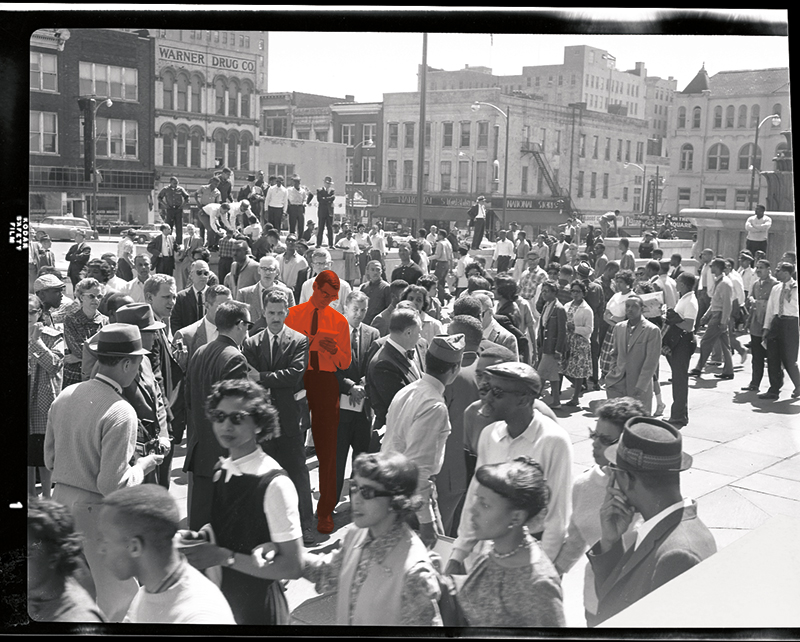
Halberstam reports for The (Nashville) Tennessean. (Photo Courtesy Julia Halberstam)
“There were all sorts of black marks on his name, coming down here,” says Curtis Wilkie, a former Boston Globe White House correspondent and author of Dixie: A Personal Odyssey Through Events That Shaped the Modern South. “Two-thirds or three-fourths of the Civil Rights lawyers who came down here were Jewish and they were called outside agitators. David would have been Exhibit A.”
Determined to tell the Civil Rights story, and unable to do so in the pages of the West Point paper, Halberstam freelanced for The Reporter, a liberal bi-weekly based in New York. “He would drive to the other side of the state for the Emmett Till trial, not a side trip [Daily Times Leader Editor] Henry Harris would have approved of,” says Wilkie, a longtime friend. (Till, a 14-year-old black visitor to Mississippi from Chicago in 1955, was lynched after being accused of flirting with a white woman. His murder became a symbol of southern injustice.) Harris didn’t like Halberstam covering Civil Rights, Halberstam recalled in his Esquire article. If he had to freelance, Harris asked, why couldn’t he write for Field & Stream or Outdoor Life?
“I would have never felt comfortable doing it,” says Wilkie. “That just showed the courage and chutzpah that David had. He was willing to tackle any challenge.”
Halberstam came into work one day in 1956 and was given a few hours to clean out his desk. His replacement had already been hired. “I lasted 10 months,” he told the late journalist John Egerton, author of the 2001 book, Nashville: An American Self-Portrait. “The fact that I lasted any time at all seems amazing to me even now, considering that I was a 21-year-old Jewish kid just out of Harvard and deeply interested in a subject that Henry Harris, the editor, didn’t think was a story at all and didn’t want covered. . . . I still remember his exact words: I was ‘free, white, and 21’ and could go wherever I wanted.”
Halberstam wasn’t out of work for long.
He called Hodding Carter, II, the Pulitzer Prize-winning editor of The Delta Democrat-Times in Greenville, Mississippi, who told him about a job at The (Nashville) Tennessean. Carter, a well-known southern progressive, described the daily as “the best stepping-stone paper in the country,” and put in a word for Halberstam with Coleman Harwell, the Tennessean’s editor.
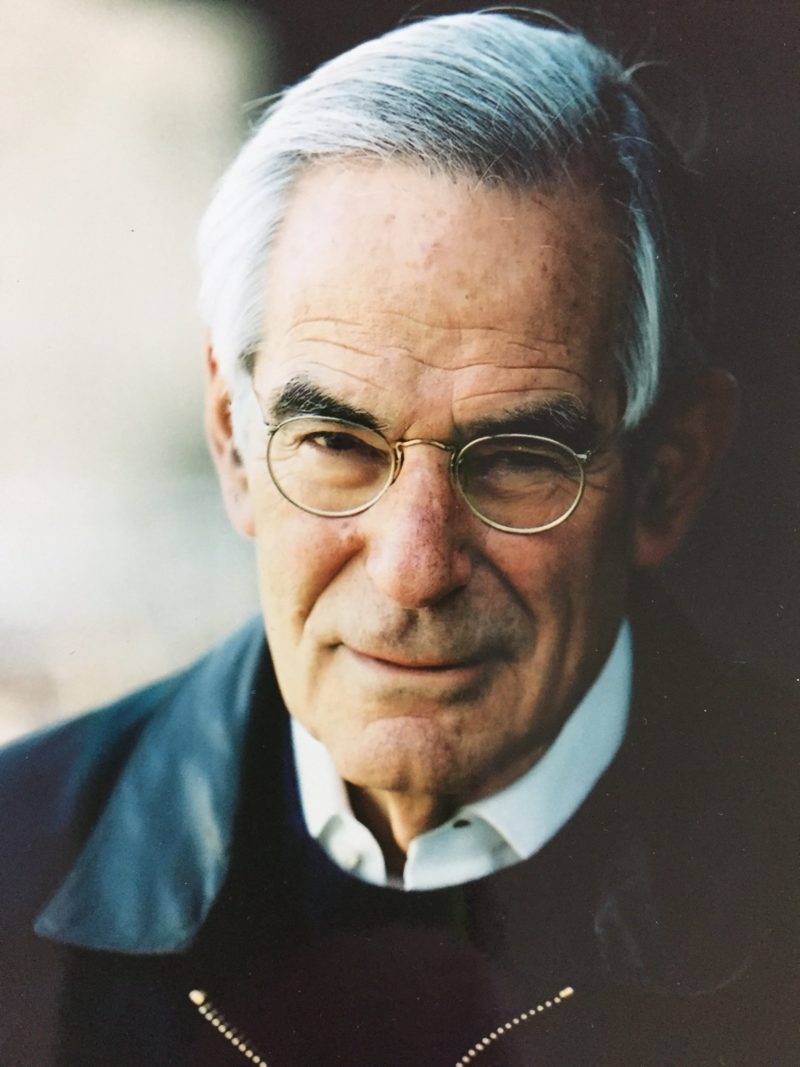
Photo Courtesy Julia Halberstam
“So I drove into Nashville on a beautiful April day in 1956 and I stayed on to spend four wildly happy years there,” Halberstam told Egerton. “The newspaper was right in the thick of every fight, and I was like the proverbial kid in the candy store, just devouring everything I could get my hands on.” He was the Tennessean’s main reporter covering the Nashville sit-ins, protests for three months in 1960 calling for the end of segregation at lunch counters in downtown Nashville.
One of the young activists he met and befriended was John Lewis, now a US congressman from Georgia. “I have often said that without the members of the media, the Civil Rights Movement would have been like a bird without wings,” Lewis wrote shortly after Halberstam’s death. “David Halberstam, as a reporter for The (Nashville) Tennessean, was a sympathetic referee who helped to convey the depth of injustice in the South as well as the heart and soul of a movement that would transform America. We talked to him because we trusted him. We trusted that he [would get] the story right, and we believed he would be fair.”
In his 1998 book, The Children, about the Civil Rights movement as seen through the experiences of the young people who led it, Halberstam wrote: “It was one of those rare moments when American journalism was enhanced by an exceptional group of professionals who took uncommon daily risks to cover a difficult and demanding story.”
After joining the Washington bureau of The New York Times in 1960, when he was 26, Halberstam volunteered to cover the fighting in the Congo. By 1962, he sensed that an even bigger story was about to break and he was off to Vietnam.
In Mississippi and Tennessee he’d learned the importance of maintaining a healthy skepticism about government authorities. In Vietnam that skepticism informed the way he—and eventually others—covered the war, and he began to write that the American government was underestimating the resolve of the enemy. “His work on the Vietnam War helped Americans and policymakers understand the impact of foreign policy, and it helped bring an unjust war to an end,” John Lewis wrote.
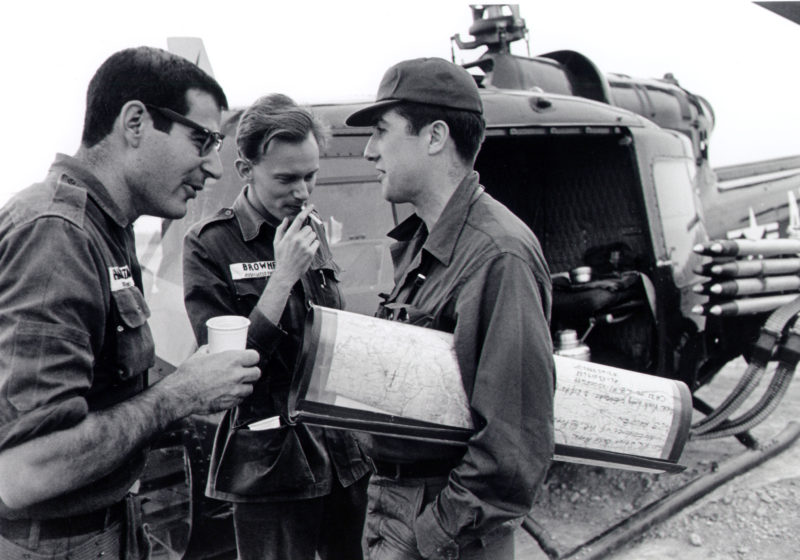
In this undated photo taken in the early to mid-1960s, from left to right, reporters David Halberstam of The New York Times, AP Saigon correspondent Malcolm Brown, and Neil Sheehan of UPI chat beside a helicopter in Vietnam. (AP Photo)
Neil Sheehan, then a reporter for United Press International, recalls a battle that the US military was preventing the press corps from covering. Afterward, Brigadier General Richard Stilwell scolded the journalists for calling a military official at home in an effort to catch up on the action. “David was getting more and more angry,” said Sheehan, who in 1989 won a Pulitzer for A Bright Shining Lie, his book about Vietnam. “His arm shot up. ‘General,’ he said, ‘we are not corporals. We do not work for you. We work for our editors. We will disturb the commanding general at home any time we have to do so, to get our job done. IS THAT CLEAR?’ ”
Matters came to a head on October 22, 1963. President John F. Kennedy, furious about Halberstam’s dispatches from Vietnam, summoned New York Times Publisher Arthur Ochs Sulzberger to the White House.
As Halberstam related in The Powers That Be, Kennedy asked Sulzberger:
“You don’t think he’s too close to the story?”
No, Sulzberger replied.
“You weren’t thinking of transferring him to Paris or Rome?”
No.
News of that exchange quickly spread in the worlds of Washington politics and journalism.
I learned to respect people I often disagreed with in the most profound way.”
Long after Vietnam, Halberstam’s experiences in Mississippi and Tennessee influenced his writing. And the subjects of his stories appreciated his endeavors to seek the truth about their lives. In his 2002 book Firehouse, he wrote about the devastation caused by the 9/11 terror attacks at a firehouse on the Upper West Side of Manhattan, Engine 40, Ladder 35, just a few blocks from where he lived. When Halberstam died five years after the book was published, the firefighters honored him as though he were a fallen comrade by bringing homemade pasta to the Halberstam home.
Will Schwalbe, executive vice president of Macmillan and the Hyperion editor on Halberstam’s last four books, is still struck by how many people told him that “they talked with David every day.”
It’s impossible to know what Halberstam would have made of the 2016 presidential election, the discontent that led to Donald Trump’s victory, and the divisions in the US today.
But Halberstam himself may have provided some clues when he talked about his time in the South during his commencement address at the University of Mississippi in 2005. He said: “What is important is that I did not learn the things I expected to learn, the things I thought I was going to be paid to learn—I learned instead other, more enduring things that have lasted me the rest of my life. . . . I learned that people from other parts of the country are not any more stereotypical than I was, that human complexity always confounded you, and that the most dangerous thing in the world is to underestimate the intelligence and decency of other people. And finally, perhaps most important of all, I learned about the nobility of ordinary people.”
Jon Friedman teaches at the Stony Brook University School of Journalism and LIU Post. He wrote the Media Web column of MarketWatch for more than 13 years, and covered Wall Street for Bloomberg News, USA Today, and Businessweek. He has written for The New York Times and The New York Post as well as the websites of The Wall Street Journal, Esquire, and Time. He has also written and co-written several nonfiction books.

